
|
||
|
Issue 45 |
|
2007-02-26 |
 Beja ©2006 J.Crawford Announcements
Calamity UpdateAs reported in the last issue, my parents were involved in a serious car crash nearly five months ago. My father has been back home since early December. My mother has had a stormy course but is now making good progress, with the expectation of an eventual return home. I can report from the front lines that the consequences of a bad crash are even worse than you think.Carfree Times in GermanThanks to Ulrich Nehls, Carfree Times has been available in German since September 2003. The German edition is available about a month after the English edition. I add a link to the German edition near the top of the English edition when the translation is complete.Carfree Design ManualI am finally back at work on the new book, but I am not able to find more than a few hours a week, and progress is still slow. However, the book is taking shape and should be very interesting once completed.Carfree Cities AvailabilityBoth the paperback and hardcover editions of Carfree Cities are widely available. For details, see the Ordering Information page.Support for Carfree.comMichael Hoag of Village At donated money to keep Carfree.com on line from June 2006 through March 2007. Two anonymous donors paid for April and May 2007. Bernard Delloye paid for hosting in June 2007. Thanks to all our contributors for their generosity. Please see the Support Page if you can consider making a contribution.ThanksThanks to the many stringers who have forwarded stories to Carfree Times. I've stopped naming people for fear of slighting someone by overlooking a name.
Carfree.com supports World Carfree Network (WCN) by posting the most important network announcements here. Visit the
WCN web site for full information regarding the network's activities.
|
|
 ©2006 J.Crawford A Farewell to PortugalI lived for a couple of years in Portugal and came to appreciate that country for its warm people and charming old urban areas. I have now had to move back to the USA and will miss Portugal. I pay a retrospective visit to Portugal in this issue by scattering it with photographs of Portuguese towns I have known and loved.
|
News Bits ©2006 J.Crawford Carfree FreiburgParents in the Vauban district of Freiburg (southwestern Germany) use bikes with trailers, not SUVs, to pick up their kids from school. Vauban is now regarded as a success story in the effort to develop a green neighborhood that's also a great place to live. Vauban comprises 1700 new houses on an old military base a few kilometers from the center of Freiburg, itself a town that has led the way in pushing cars out and bringing bikes in. Many ideas once dismissed as "eco-fantasy" are becoming standard public policy in Germany. Some of this may have to do with the price of gasoline in Germany: about US$6.00/gallon.Freiburg, a city of 216,000, made its medieval core much more pedestrian friendly. It added a good network of bike paths and introduced flat-rate fares for trams and buses. Jan Scheurer, one of the intellectual leaders of the carfree movement, said, "Vauban is clearly an offer for families with kids to live without cars. It was meant to counter urban sprawl...." Vauban's 4700 residents have many carrots for living carfree. The stick is also used: parking spaces, available only in a garage at the edge of the neighborhood, cost €17,500. Only about 40% of residents have bought a space, in some cases just for their guests. (Half of the people who bought a space have found that they don't use it!) The rate of car ownership in Vauban is only 150 per 1,000 inhabitants, about one-third the rate in Freiburg as a whole, and less than one-quarter the rate in the auto-centric USA. But even in the USA, cities like Davis, California, have pioneered carfree living, and 17% of its residents bike to work. (Both Davis and Freiburg are university towns.) In 1998, Freiburg acquired the Vauban site and worked with local greens to develop a master plan for the area. Key points were to achieve ecological, social, economic, and cultural goals while building a solid infrastructure for young families. The city let small homeowner cooperatives design and build their homes from scratch rather than simply hand over the area to a real estate developer. The approach led to a holistic plan for a sustainable urban district. The streets were deliberately made narrow to discourage cars. Unfortunately, the city would not allow streets to be as narrow as 3 meters (10 feet), and so people do sometimes park in them. Schools are located right in the district, serving the one-third of the local population that is of school age. As Germany's population ages and shrinks, Vauban's model will be used to attract citizens and especially young families. "We have fewer young people. What you need now is a good quality of life with good services, a good infrastructure for kids and older people," says Thomas Schleifnecker, an urban planner from Hannover. But according to Scheurer, what makes Vauban unique is that "it's as much a grass-roots initiative as it is pursued by the city council. It brings together the community, the government, and the private sector at every state of the game." One very important point is that 57% of the households on "carfree contracts" decided to give up their cars in order to move into Vauban. Carfree districts therefore help to reduce CO2 emissions by offering the carrot that gets people to give up their cars. The future is arriving, and it's coming on foot, by bike, and aboard public transit. Don't be late!
"New German community models car-free living"  ©2005 J.Crawford Fake Carfreedom in ItalyThe small Italian city of Spoleto is under continuous assault by cars, and air pollution has become significant. But some dream of a carfree Spoleto. Unfortunately, the project "Spoleto: Carfree City Open to People" may not improve matters very much.The project includes the construction of three big parking lots (total capacity 1000 cars) outside the medieval walls. These garages will be connected to the historic city heart by 500 meters (1600 feet) of moving walkways, escalators and elevators. The project will cost €59 million. The goal is to fully pedestrianize the historic city center. Some doubts remain. The local environmental group, Legambiente (Friends of the Earth) Spoleto, has opposed the project from its inception because the intervention will be highly invasive and on too large a scale for such a small city. It will require extremely high maintenance costs. Finally, it will not improve the most serious problems: connections between the center and the suburban areas, traffic along the main urban roads, the number of circulating cars, and inadequate public transport. Air quality is not likely to improve when the project is completed. The project is aimed at tourists and does not meet the needs of citizens, most of whom live in the suburbs, where most services also are located. Finally, the number of tourists does not justify the construction of three parking lots. Up to now, only the first parking lot is open. The next two are under construction, but the first lot is still nearly deserted at all times of day. The circulation and parking ban in the city center is limited to certain times and areas (even on weekends), so the first garage has had little effect. The real question is whether or not the local government will really close the medieval core of Spoleto to cars. Legambiente is pushing for this and also for the restoration of the center, which would allow people to move back there. (Today only 4400 people live in the center, compared to 11,000 in the 1970s; the population of the urban area has not changed since then.) Legambiente is also calling for the implementation of radical, sustainable, and non-invasive urban mobility solutions. I should note that in Italy, as in so many nations, one always has to ask if these projects are not being built to line the pockets of the contractor-friends of those in power. Environmental objectives may have nothing to do with the motives of those in power.
"The Downsides of Spoleto: Carfree City Open to People"  ©2005 J.Crawford Better Carrots?Santa Barbara in California adopted a new strategy with its Casa de Las Fuentes housing development. The 42 low-income units in downtown offer excellent access to jobs, shops, recreation, and transit. There are just 16 cars in the complex. This is in response to policies adopted by the city. The highest priority goes to residents who work downtown, do not own a vehicle, and agree to not own one during their occupancy. Rent is reduced by $50 per month. The city council decided that walking to work was a public policy objective.Jeffrey Tumlin of Nygaard Associates transportation consultants said, "The most cost-effective traffic reduction... is to provide housing for workers. Matching housing and jobs creates a profit. This is a traffic reduction measure with a 'negative cost'."
"Affordable Housing: Santa Barbara Housing Authority Builds Development  ©2006 J.Crawford Dreamscape?Melbourne's iconic Sydney Road has become so congested and polluted that Mayor O'Brien is planning to ban cars from a long stretch of it. In his first speech as mayor, he espoused the virtues of a new carfree mall. "This will become the longest boulevard in the world. What could be missing from this beautiful setting? Cars, noise, pollution and traffic movements."The mayor's vision encompasses a mall that would be four kilometers long and could be completed within three years. The public has experienced parts of Sydney Road carfree during Cyclovia and embraced the change.
"Sydney Road: a boulevard of dreams" 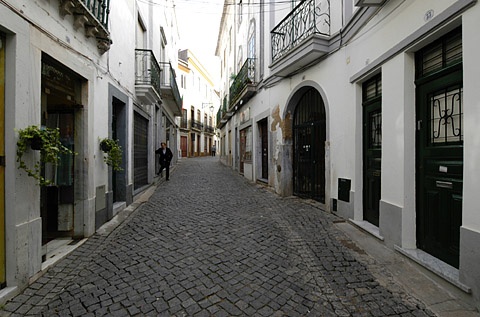 ©2006 J.Crawford Urban VillagesThe CoolTown blog has had a series of articles on "beta communities", i.e. groups of people who get together to plan a community they hope to live in, and on how to effectively communicate a vision for a community to the public concerned. The following links are interesting:
"CoolTown home"  ©2005 J.Crawford Fixing Our CommunitiesRichard Joseph Jackson recently published Urban Sprawl and Public Health (with Howard Frumkin and Lawrence Frank). The message is simple: our auto-centric suburban environment is killing us. The New Urbanists have been saying this for decades, but Jackson has the numbers. He shows how sprawl is at least partially responsible for a wide range of American diseases: asthma, diabetes, hypertension, depression. The USA spends one dollar in six for health care yet has some of the worst health statistics in the developed world.Jackson, a pediatrician, spent more than 25 years in public health and was director of the National Center for Environmental Health at the CDC. He was interviewed by Jeff Speck, city planner and director of design at the National Endowment for the Arts: It seems that what has been eliminated from our new suburban communities is the useful walk: the one that serves a purpose because it gets us somewhere we need to be. Itís only possible with mixed-use zoning. When youíre getting things done, you donít even notice that youíre walking. The other thing that I would emphasize alongside fitness is public safety. Bringing public safety into the tent is very important. If you add crime and car crashes together, youíre 20 percent more likely to die in the suburbs.So, where are the artists? Hello? Is this thing on?
"Our Ailing Communities"  ©2006 J.Crawford Cities in 2050Herewith a highly edited gaggle of quotations from luminaries that was recently published on the BBC web site:Hank Dittmar, American transport expert and head of the Prince's Foundation for the Built EnvironmentIn 2050, I would hope to see cities that restored a more intimate relationship with the countryside around them both in the use of local materials in building construction and local traditions of architecture. Michael Dear, Professor of Geography at the University of Southern CaliforniaWe don't build a city and towns with city centres any more; you add city centres afterwards as an aesthetic afterthought or as a consumption opportunity. We simply have a collage or pastiche of almost random urban spread which ultimately collides and creates cities and then we start adding the trappings of conventional cities. Nigel Thrift is vice-chancellor of the university of Warwick and one of the leading human geographers and social scientistsIn the developed world my guess is by 2050 energy sustainability will have become a big deal and the result of that will be that the kind of sprawl that we have seen in the United States in particular will actually be halted, on the grounds of energy costs. Stephen Graham is a professor of human geography at the University of DurhamI think there is a demand to be face-to-face with people no matter how capable the technology - and, of course, by 2050, we will have had fairly radical technical shifts. Those processes of change seem to go together rather than in opposition. Walden Bello, Executive Director of the Bangkok-based research and policy institute Focus on the Global SouthThe capital of the empire is becoming a paradigm for the rest of urban America: Washington, DC, is a predominantly black city dominated by white minority that works in the city by day but lives in the suburbs of Virginia and Maryland by night.
"Viewpoints: The urban world in 2050" 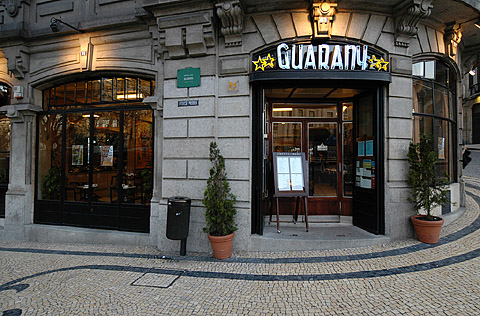 ©2005 J.Crawford The Trolley RevolutionIn recent years, trolleys and light-rail vehicles have been conflated into a single category: rail systems that are not "heavy-rail," which means that standard railroad trains do not operate over them. However, an important distinction has been lost: whether or not the track runs in the middle of the street (trolleys) or on its own right-of-way (light rail). (The distinction is not absolute, and light rail does sometimes run short distances in the street.) Light rail is pretty expensive but still much cheaper than heavy metro systems. Trolleys are the cheapest rail systems, making use as they do of street-running in most cases. The right-of-way is free.Trolleys have been frowned upon in part because they take away street space from cars and because their operations are sometimes retarded by car traffic. This has done nothing to reduce their popularity in Europe, where many cities never banished rail vehicles from the street. In the USA, such systems had essentially disappeared by about 1970. Suddenly, however, the old-fashioned trolley is making a comeback in American cities, often in the same cities that it helped to shape a century ago. Several cities have already restored their streetcars and some three dozen others are planning to, including Tucson, Birmingham, Miami, and Trenton. Streetcars have become an important draw for investment in renaissance neighborhoods in blighted areas. One reason this approach is favored is simple economy. Streetcars are less expensive because they use lighter cars and share the road with other vehicles. And perhaps even more than the railroad, streetcars evoke nostalgia. Many of today's new lines are quite short - just a couple of miles. They cost $10-15 million a mile compared to $50-75 million a mile for light rail and about $200 million a mile for metro systems. Just as in the past, some developers are paying part of the cost, which they are recouping in the form of higher land values. The final benefit is that construction is relatively quick.
"Streetcars Back on Rails in America" 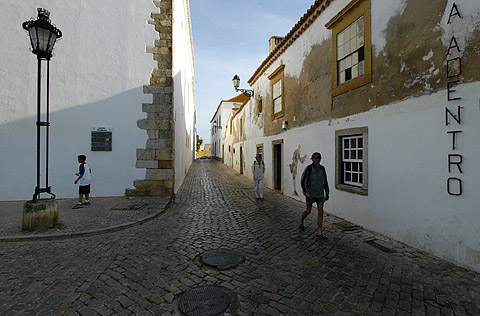 ©2005 J.Crawford Transit News from the USADave Morris summarized recent transit news from the USA for Carfree Times:
"Cars in America" 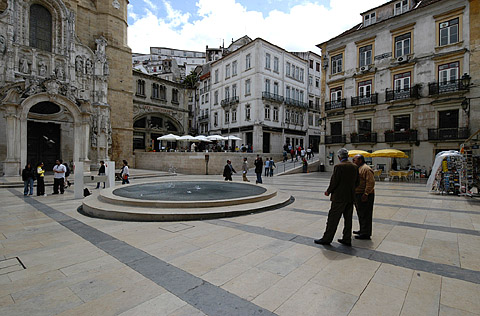 ©2005 J.Crawford O Canada, Land of the GreenCanadians now care more about global warming than health care. All political parties are trying to out-green their rivals. So why have Canadians suddenly become obsessed with global warming? Why are they willing to accept some sacrifices to address the problem?This is particularly odd given that global warming will generally benefit Canadians by lengthening the growing season, melting Arctic ice (opening up polar shipping routes), and simplifying the exploitation of natural resources in the far north. Global warming will even reduce Canada's death rate, which always increases during the winter. Even rising sea levels will have relatively little effect on Canada. Canadians seem to be influenced by several things. Al Gore's movie, An Inconvenient Truth, struck home. Recent doomsday forecasts by the respected British economist Sir Nicholas Stern were very disturbing. Finally, the detailed United Nations environmental projections have alarmed many. But maybe there is another force at work. Maybe people are looking for a great cause. The attempt to impose democracy on Iraq has failed spectacularly. Efforts to promote the values of modern Western democracies, such as human rights, gender equality, and the rule of law, have not achieved the wide adoption that was once foreseen. (Ironically, some of these values originated in the Middle East.) Every society needs a cause. Stopping climate change is the ultimate collective cause, an effort to do the right thing for ourselves, our grandchildren, and the whole planet. It's a choice for life in an era of terrorism.
"Out of the Blue: Why Green Became So Cool"  ©2006 J.Crawford Rising Greenhouse Emissions in AsiaAsia is experiencing huge increases in fuel consumption as a result of greater mobility. The cost of fuel is starting to crimp local economies. The worst news, however, is that the WHO foresees that increased pollution in Asia will cause as many as 537,000 premature deaths a year.Asia is simply not going to be able to provide increased standards of living and better quality of life by adopting Western patterns of automobility. I frankly see no alternative for Asia except the widespread adoption of carfree cities, which goes a long way towards solving all these problems.
"Asia's greenhouse gas 'to treble'" 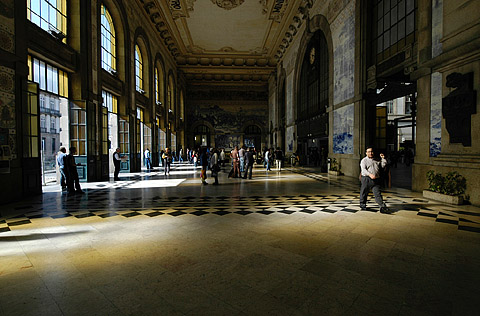 ©2005 J.Crawford False Alarm?A close examination of Atlantic Ocean currents indicates that there is, in fact, no sign that the "conveyor belt" that supplies warm equatorial water to the northern Atlantic has slowed down. The system is subject to natural variations in speed and direction. Furthermore, some scientists hold that it would take decades before a systemic change in velocity became visible above the natural noise in the system.The data comes from the RAPID study conducted in March 2004. Currents were measured by 19 buoys stationed between West Africa and the Bahamas. The snapshot data was compared with four earlier, similar surveys going back to 1957. The snapshot showed a 30% slowing in the northward flow. However, the analysis of the year-long observations showed no net change in flow. Natural variations are large, and 95% of scientists at a workshop in Kiel concluded that we have seen no appreciable change in Atlantic circulation. Plans are to continue observations for a decade. This does not mean that we are out of the woods; it only means that disaster is apparently not imminent.
"False Alarm: Atlantic Conveyor Belt Hasn't Slowed Down After All"  The Paving of UC BerkeleyThe University of California at Berkeley, which saw violence during the Free Speech Movement under Governor Ronald Reagan (yes, that Reagan), is again the locus of conflict and potential violence. This time, it's the trees. The university "needs" more parking and wants to cut down an old grove of trees to provide it.The tree-sit protest has heated up on the ground and in court. UC Police confiscated the protesters' camping materials under the trees. The tree sitters are still up in five oaks and a redwood in the grove where UCB wants to build a parking lot and sports facility. The cutting would be wrong from almost any perspective, but where the University runs into real trouble is that the City of Berkeley protects such trees by law. Outcome still unknown at this point.
"UC Berkeley attacks tree sitters despite court rulings"
|
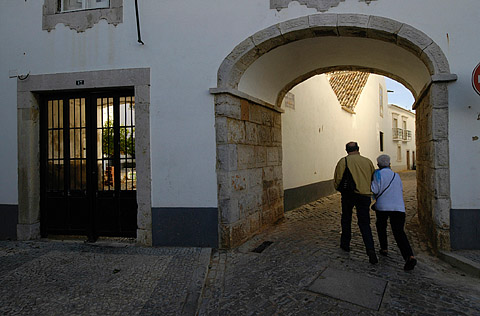 ©2005 J.Crawford The Zen of Cars, Bikes, and FeetA recent compilation of transport wisdom"Every time I see an adult on a bicycle, I no longer despair for the future of the human race." - H.G. Wells "All truly great thoughts are conceived by walking." - Nietzsche "No city should be too large for a man to walk out of in a morning." - Cyril Connolly "There's something wrong with a society that drives a car to work out in a gym." - Bill Nye "Nothing compares with the simple pleasure of a bike ride." - John F. Kennedy "Walking makes for a long life." - Hindu proverb Driving makes you stupid. Cities are for people, not for cars. Just park it! Those who do not find time to walk will have to find time for illness. End world hunger. Feed people, not cars. Buying a new car only makes you poorer, never more popular or happier. Riding a bike is not un-American. This is especially true if you slap an ACLU sticker on it. Driving an SUV is un-American, no matter how many American flags you stick on it. One minute of bike pedaling is more exercise than an hour of pushing on the gas pedal. Even if you push really hard. Streets are living rooms, not parking lots. Cars make it hard for us to hear each other. You can't see anything from a car. Love a cyclist, not a car.
Hot New LinksThe links below will open in a new browser window:
Making Other Arrangements by James Howard Kunstler Towards a motor-free city from Auroville Universal Township Removing Freeways - Restoring Cities from the Preservation Institute Weighing In on City Planning: Could smart urban design keep people fit and trim? by Ben Harder PedNet - pedestrians and cyclists in Columbia, Missouri The Good Life in Greece by Jay Walljasper My City Is Mine, Thanks to my Wheels by Debra Efroymson Why I traded in my car for a bike by Mark Stosberg One Less Car - The Movie "Win-Win Transportation Solutions Cooperation for Economic, Social and Environmental Benefits" [PDF!] from VTPI Kollektivtrafik för bilistens behov [PDF!] (Swedish)
About Carfree Times
Next IssueThe next issue of Carfree Times is expected in May or June 2007.
Subscribe to Carfree TimesCarfree Times is published quarterly at Carfree.com. To receive e-mail notices of new issues, please visit the subscription page or send e-mail with the word "Subscribe" in the subject line. We do not share our mailing list.
Write for Carfree TimesInterested in writing for Carfree Times? We welcome articles on a wide variety of subjects, and offer an opportunity to publish letters to the editor and guest editorials. Drop us an e-mail.
|
| Editor | J.H. Crawford |
| Send e-mail | |
| URL | http://www.carfree.com/ |
![]()
Back to Carfree.com
Carfree Times Home
Back to Carfree Times Issue 44
Forward to Carfree Times Issue 46
About the book: Carfree Cities
E-mail
carfree.com
Copyright ©2007 J.Crawford

